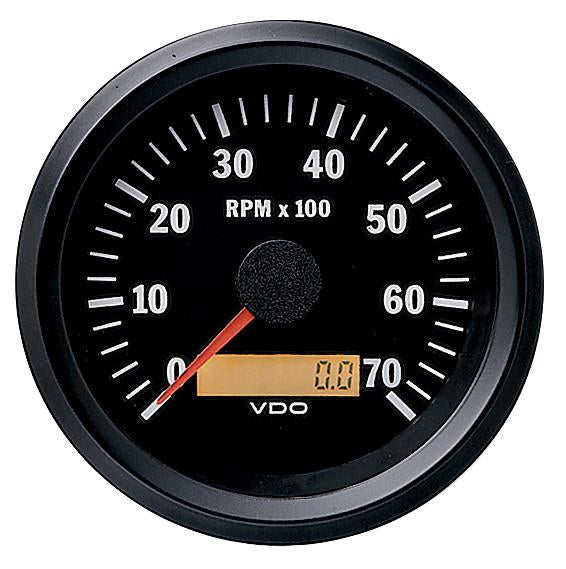Tachometer Acquiring Overview: Attributes to Seek and Ideal Brand names
Tachometer Acquiring Overview: Attributes to Seek and Ideal Brand names
Blog Article
The Significance of a Tachometer in Checking Engine Rate and Efficiency in Automotive Applications
In the world of automobile engineering, the tachometer stands as an essential instrument in the motorist's toolbox, giving a direct window into the inner functions of an automobile's engine. Past its function as a simple gauge of changes per min (RPM), the tachometer offers as a critical tool for lovers and experts alike, supplying real-time insights right into engine efficiency and health.
Importance of Monitoring Engine RPM
Checking engine RPM, or revolutions per minute, is a crucial element of automobile upkeep and efficiency evaluation. Engine RPM straight correlates with the speed at which the engine's crankshaft turns, showing exactly how rapidly the engine is running - tachometer. By checking RPM, mechanics can evaluate the health of the engine, spot possible problems, and fine-tune performance. An abnormal RPM reading might indicate troubles such as engine misfires, faulty trigger plugs, or problems with the fuel shipment system. Constantly high RPM readings could indicate hostile driving routines or the demand for a greater gear shift to boost fuel efficiency.
Furthermore, keeping an eye on engine RPM is necessary for performance evaluation in auto racing and high-performance lorries. In summary, keeping an eye on engine RPM is not only crucial for finding problems yet additionally for optimizing engine efficiency in numerous automobile applications.

Benefits of Real-Time Data
In auto applications, real-time information plays an important role in providing immediate understandings right into the efficiency and condition of the vehicle. By continuously monitoring various specifications such as engine speed, temperature, gas consumption, and more, real-time information uses many benefits that contribute to improved performance and safety and security when driving.
Additionally, real-time information assists in performance optimization by giving prompt feedback on driving behaviors and engine performance. Motorists can readjust their habits in real-time based on this info to achieve much better fuel economic climate and lengthen the life-span of their car.

In addition, real-time data plays a vital role in modern vehicle diagnostics, enabling technicians to swiftly diagnose and deal with breakdowns. This leads to minimized downtime, lower maintenance costs, and eventually, boosted overall vehicle reliability and long life (tachometer). By taking advantage of the power of real-time data, auto stakeholders can make informed decisions that favorably influence both the performance and longevity of the vehicle
Effect on Equipment Shifts
The tachometer plays an essential duty in maximizing equipment shifts by providing real-time engine speed data to the vehicle driver. When approaching the redline on the tachometer, it signals the driver to upshift to avoid over-revving the engine and creating prospective damages.
Moreover, the tachometer help in accomplishing smoother gear shifts, particularly in hands-on transmissions. By keeping track of engine rate, chauffeurs can execute her response gear changes at the ideal RPM variety, minimizing jerking movements and lessening endure the transmission components. This precision in gear changes not only enhances driving convenience yet likewise contributes to fuel effectiveness.
Enhancing Gas Efficiency
Given the important duty the tachometer plays in enhancing gear shifts for efficiency and engine wellness, it directly adds to maximizing gas efficiency in automotive applications. By providing real-time feedback on engine rate, the tachometer assists drivers in maintaining the most effective RPM array for fuel economic situation. When drivers regularly monitor the tachometer and change their driving habits accordingly, they can stay clear of unneeded gas consumption triggered by over-revving or carrying the engine.
Additionally, the tachometer assists chauffeurs determine the most fuel-efficient equipment to be in at any type of provided minute, protecting against the engine from functioning harder than necessary. In final thought, the tachometer serves as a beneficial device in boosting gas effectiveness by promoting ideal driving habits and identifying locations for improvement in the automobile's efficiency.

Taking Full Advantage Of Engine Long Life
The tachometer's function in keeping an eye on engine rate and efficiency is important in guaranteeing Homepage the long life of automobile engines. Keeping an eye on the tachometer enables motorists to remain within the suggested RPM variety for their vehicle, stopping unneeded stress on the engine and extending its life expectancy.

Conclusion
To conclude, the tachometer plays an essential duty in keeping track of engine speed and performance in automotive applications. By giving real-time information on RPM, it enables for reliable gear changes, enhanced visit this site gas effectiveness, and optimized engine long life. This device is crucial for keeping ideal engine efficiency and ensuring the general performance of an automobile.
Report this page